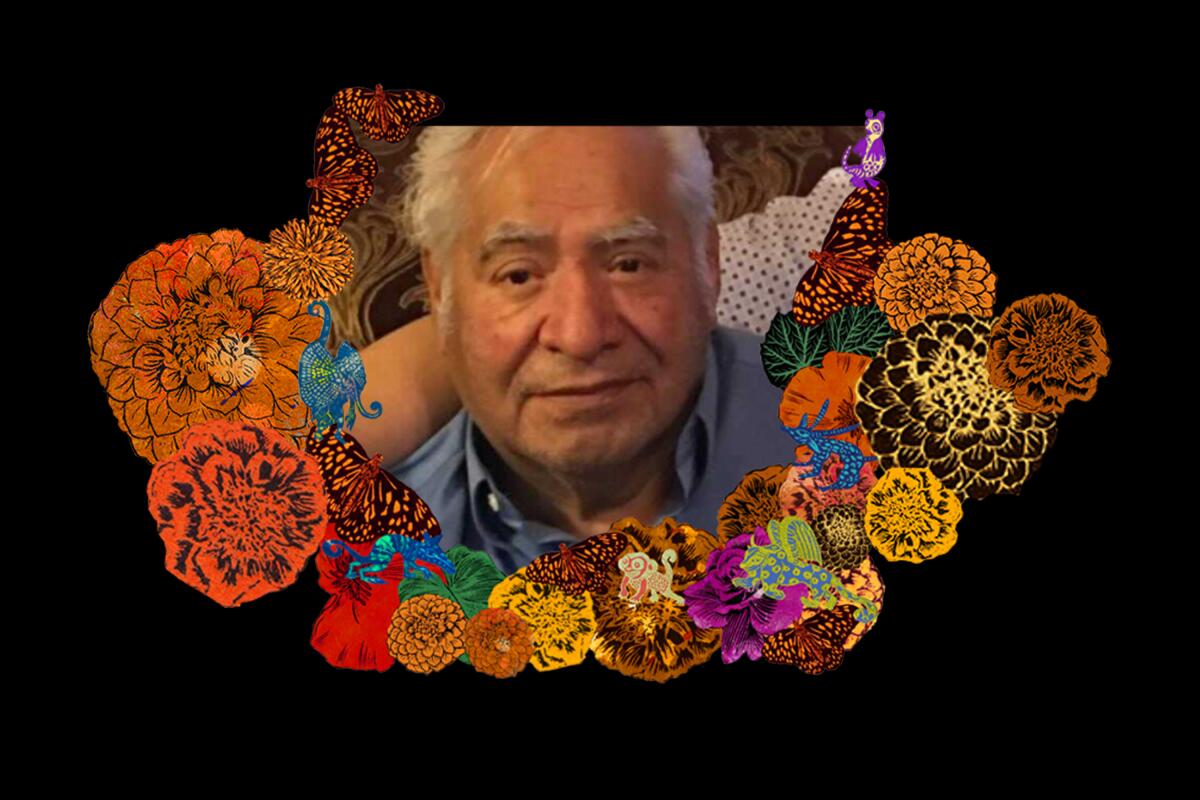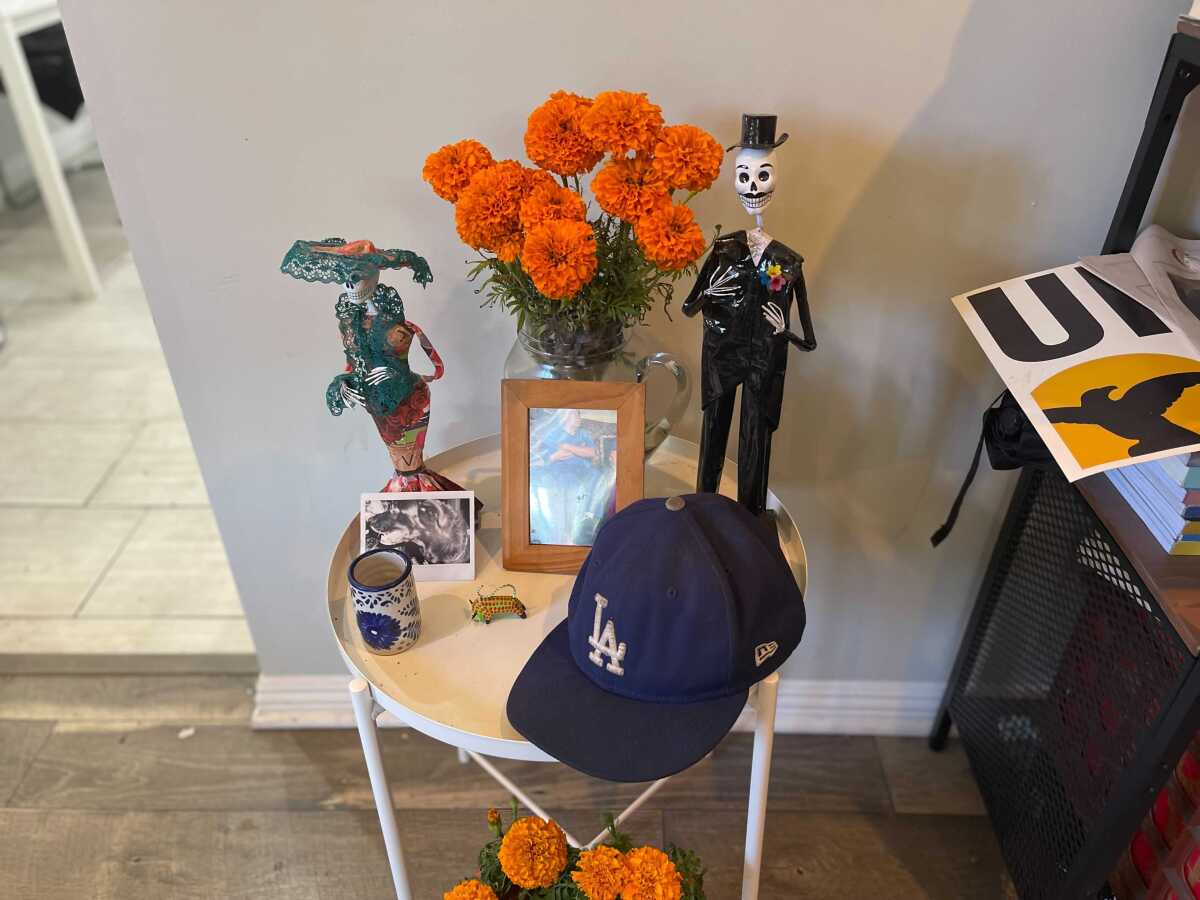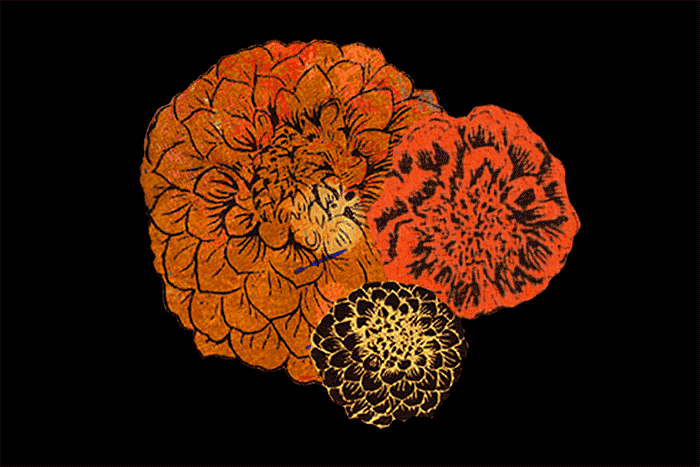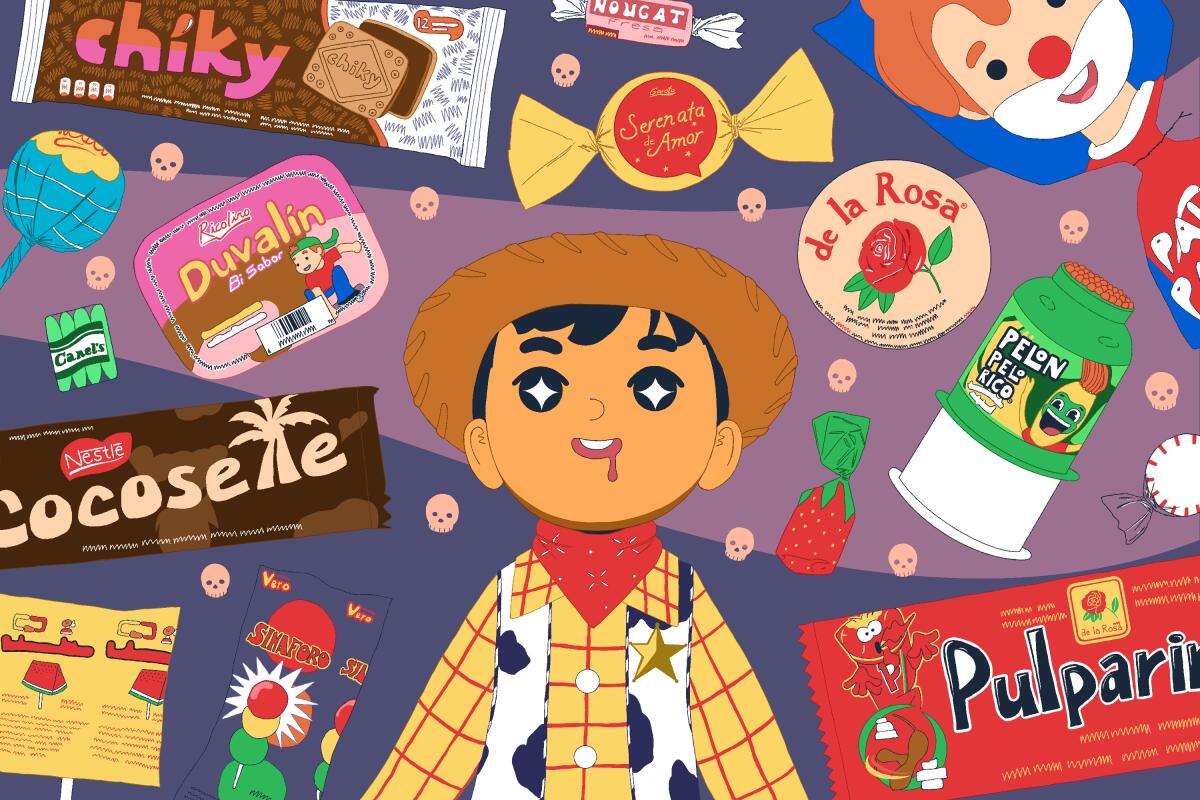Latinx Files: Para mi abuelito Luís

When I think of Día de Muertos, I think of my grandfather.
It’s partially by default. For much of my life, I had been spared from the loss and grief that come with a loved one dying. That all changed July 20, 2018. That morning, my mom called me saying I needed to come home because my abuelito Luís, my dad’s dad, was gravely ill and hospitalized. Before I could make any plans to head back to Texas, she called once again, this time letting me know he had died.
It’s not that he left us too soon — he was 83. Not a bad age to go, if you ask me. Still, I foolishly thought I had more time. Time to learn about his life before the United States, to learn about his aspirations and fears. I wish I’d been more curious about how deep those parts of my roots were.
In reality, though, my family had lost a huge part of him years prior because of Alzheimer’s.
What kind of man was Luís Isabel Martínez? It depends on whom you ask.
My dad likes to talk about his father’s integrity, retelling a story in which mi abuelito is admonished by his brother-in-law for not stealing from him while working at his store. The way my dad tells it, my great-uncle knew all his employees were skimming from the cash register. Everyone but my grandfather. Instead of praise, my great-uncle yelled at him, arguing that if he let others do it, he wasn’t going to say anything to the man married to his sister.
“Era muy noble y muy honesto,” my mom added. “Muy reservado y calladito.”
It’s true that Luís Isabel Martínez was a quiet man, but he wasn’t meek. Quite the contrary — he was very brave. At the end of the day, actions matter more than words, and no amount of talking will ever truly quantify the level of courage it took for him to leave his homeland and family behind for a chance at a better life.
If it weren’t for him, I wouldn’t have an American passport and all the freedoms that come with it. As Latinx Files reader Joshua Rivera once put it, all we are is “essentially other people’s collective effort.”
I think of him the most in those instances in which I doubt my sense of place. It’s in those moments when I wonder whether the cost of living in this city and the distance between my family and me, all in pursuit of professional aspirations, are worth it. I think of him living in Chicago and wonder if he asked himself similar questions.
It makes me feel less alone.
Which brings me to Día de Muertos.
The Latinx experience chronicled
Get the Latinx Files newsletter for stories that capture the multitudes within our communities.
You may occasionally receive promotional content from the Los Angeles Times.
For the last few years, I’ve made it a point to make an ofrenda to him. I find it comforting going through the process of getting all the materials ready, from the cempasúchil flowers to the papel picado. Because I live in Los Ángeles, this also happens to be a communal experience. I saw countless families doing the same Saturday at Boyle Heights’ historic El Mercadito. If that is not the definition of “que lindo es lo bonito,” then I don’t know what is.
What I love about Día de Muertos is that it bridges the gulf created by time, distance and the afterlife. For a short period each year, we are given an opportunity to look back and reflect how far those collective efforts have gone.

On Monday night, I’m going to sit in my living room and spend time con mi abuelito Luís. I’ll pour ourselves some mezcal (he wasn’t much of a drinker, but I’d like to think he’d indulge me) and put on some boleros (he was partial to Los Panchos). I’ll ask him whether he remembers driving me to the airport on my way back to school half a country away, telling me about his childhood dreams of being a bullfighter. I’d thank him for teaching me how to drive (my dad is his father’s son, and he spent part of my teenage years working far from home) and to find solace in the open road ahead of me.
But mostly, I’ll just tell him how much I miss him. Te extraño un chingos, ’buelito.
Our daily news podcast
If you’re a fan of this newsletter, you’ll probably love our new daily podcast, “The Times,” hosted by columnist Gustavo Arellano, along with reporters from across our newsroom. Every weekday, it takes you beyond the headlines. Subscribe on Apple Podcasts and follow on Spotify.
Meet our Latinx staff: Steve Padilla
The Los Angeles Times employs more than 60 Latinx journalists. One of the goals of this newsletter is for you to meet them all. This week, we highlight Steve Padilla, Column One editor and a bona fide O.G.
Like many Mexican American families, we held on to some Mexican holiday traditions — tamales at Christmas, buñuelos at New Year’s — or created our own hybrids. To us, the fourth Friday of November was “Mexican Thanksgiving” because that’s the day my grandmother tossed leftover turkey into mole. But Día de Muertos? Not in our house. I think we were too assimilated — too citified in the L.A. suburbs — to appreciate the Indigenous worldview that accompanies the day.
I can recall my mother, Dora, mentioning Día de Muertos only once. Her father was a milkman, she said, and as he made his rounds in East L.A., he entered homes and thus saw lots of ofrendas. Mom said the señoras would ask him how theirs compared with, say, the one put up by Mrs. Rios or Mrs. Romero. “Yours is the best,” he would assure everyone. “The prettiest.”
I had read about Day of the Dead but never assembled an ofrenda — just didn’t feel the need. But I now feel drawn to the holiday, and I’m guessing many Latino families feel the same. So much loss during this pandemic, so much of it in the Latino community. My mother contracted COVID-19 and died in January; my father, Al, died three months earlier, of various ailments, and my older brother, Dan, passed seven months before Dad, felled by a stroke.
I recently researched the holiday for a story I wrote for our Food section. I explore the symbolism behind offerings on the ofrenda of food, including tamales, salt and pan de muerto. My guide in all this was Martha Ramírez-Oropeza, a UCLA professor and expert on Día de los Muertos who shared that just about everything associated with the day — from the hojas wrapping the tamales to the candles and colorful papel picado— represents something else. I was particularly taken with the deep meaning behind the cempasúchiles, or marigolds. I knew their bright colors and powerful scent form a path spirits follow from the beyond, but Ramírez-Oropeza revealed something else. Marigolds seeds ripen while the plant is flowering; in other species, the flower must wither before the seed grows. Because of this, some Indigenous peoples believed they possessed a tonal, a vital spirit-like force.
I’ve also come to appreciate the Day of the Dead through the work of my Times colleagues. Jessica Roy and Karen García put together a guide for novices planning to make their first ofrenda. Vanessa Martínez, Martina Ibáñez-Baldor and Fidel Martínez created the virtual ofrenda where people from across the nation are posting photos and remembrances of loved ones (including a few dogs and cats and one hedgehog).
The holiday has prompted much discussion among my Times colleagues. One debate: Día de Muertos or Día de los Muertos? Some argued los was a north-of-the-border innovation given English’s fondness for articles. Gustavo Arellano, who researched the question for the “Ask a Mexican” column he once wrote, countered that he found Spanish references to Día de los Muertos from the 1700s. Upshot: Both forms can be used. Gustavo also said that in the 1700s and 1800s, a common term was Día de Difuntos. But let’s not go there.
I lost my parents and brother in 10 months, and during that time people often told me, “May memories of them be a comfort.” Cliché? Yes, but it happens to be true. After experiencing so much death so quickly — it was stunning to suddenly realize I’d never again be called mijo — I’ve come to this understanding about Día de Muertos. It’s not about mourning, nor is it a celebration. It is, quite simply, a time to remember. And with that comes the comfort and, even now, a bit of joy.
Contribute to our Día de Muertos digital altar

As Steve mentioned, the Los Angeles Times has built a digital altar.
Inspired by those found at Grand Park and the Hollywood Forever Cemetery this time of the year, we wanted to create a public space for people to honor and celebrate loved ones who have died. To make an ofrenda, all you have to do is upload a photo of a loved one, pick from one of two templates (one is papel picado and the other features cempasúchiles and alebrijes), and write a short message for that person. Once approved, your ofrenda will show up on our altar. The page is being updated manually and periodically, so please bear with us and check back later if your ofrenda doesn’t appear. A special shoutout to Vanessa Martínez and Martina Ibáñez-Baldor, who built and designed the page, respectively. Also, a million thanks to Stephanie Mercado, who provided the illustrations.
Through Mercado’s public art project “East Los Luv,” she has also created a Día de los Muertos ofrenda coloring and collage kit available for download here. Make sure to also check out “The Times” podcast on Friday. I won’t spoil it, but host and columnist Gustavo Arellano tells me it’ll be how Día de Muertos came to be celebrated in the Deep South.
Consider subscribing to the Los Angeles Times
Your support helps us deliver the news that matters most. Become a subscriber.
And now for something a little spooky...

David Reyes is a Salvadoran illustrator based in Lake Elsinore. His interests in anime and manga evolved into an appreciation for visual storytelling and using digital and traditional mediums to create peaceful environments and characters in cool outfits.
“For this illustration, I wanted to center it around Halloween as it’s around the corner. I created a kid in a Halloween costume surrounded by well-known ‘golosinas.’ Since taste is one of the most prominent senses in memory, most of these candies that were part of our childhoods will be shared and passed on to future generations, creating their own memorable experiences through delicious sweets.”
Are you a Latinx artist? We want your help telling our stories. Send us your pitches for illustrations, comics, GIFs and more! Email our art director at martina.ibanezbaldor@latimes.com.
The Latinx experience chronicled
Get the Latinx Files newsletter for stories that capture the multitudes within our communities.
You may occasionally receive promotional content from the Los Angeles Times.




